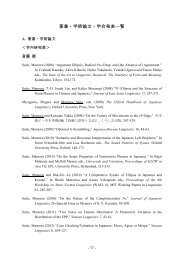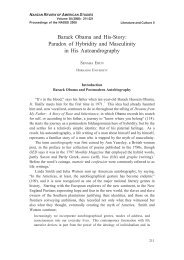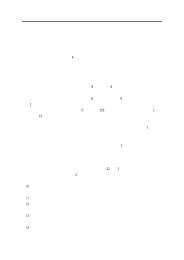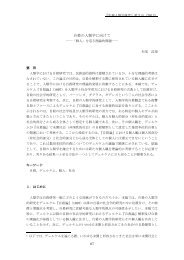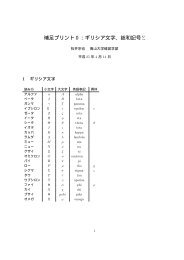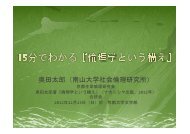INTRA- AND INTER-RELIGIOUS DIALOGUE IN ... - 南山大学
INTRA- AND INTER-RELIGIOUS DIALOGUE IN ... - 南山大学
INTRA- AND INTER-RELIGIOUS DIALOGUE IN ... - 南山大学
Create successful ePaper yourself
Turn your PDF publications into a flip-book with our unique Google optimized e-Paper software.
南 山 大 学 アジア・ 太 平 洋 研 究 センター 報<br />
第 7 号<br />
2004). Madjid gave the opening speech, which was then followed by a<br />
discussion of one of the senstivie issues analysed in the book, namely interreligious<br />
marriage. The speakers were Dr. Zainun Kamal from the State<br />
Institute of Islamic Studies, Jakarta, and Dr. Musdah Mulia, from the Office of<br />
Religious Research and Development. In short, the two speakers came to the<br />
conclusion that inter-religious marriage is allowed for Muslims (Kamal and<br />
Mulia 2003). This view is clearly in opposition to the fatwa of the Indonesian<br />
Ulama Council issued in 1980, which prohibits Muslims to have inter-religious<br />
marriage. The discussion during the book launch was quite open and lively,<br />
and no violence occurred.<br />
When I did my fieldwork in Makassar, in January 2004, I was surprised by<br />
the fact that the controversy on inter-religious marriage, and discussion (pro<br />
and con) of the book Fiqih Lintas Agama was quite hot in that city. The<br />
Muslim scholars from Wahdah Islamiyyah, an Islamic organization with Salafi-<br />
Wahhabi orientation based in Makassar and branches throughout Indonesia,<br />
were angry about the book. They managed to arrange a discussion of the book<br />
under the theme ‘Critical Studies of the book Fiqih Lintas Agama’. The theme,<br />
however, was finally changed into a more general topic: ‘Scientific Dialogue on<br />
Pluralism and Tolerance in Islam’. The invited speaker was Qasim Mathar, a<br />
liberal Muslim scholar of the State Institute of Islamic Studies (IA<strong>IN</strong>), Alauddin,<br />
Makassar and a regular columnist for the local newspaper, Fajar. The Wahdah<br />
Islamiyah was represented by two scholars, Muhammad Ikhwan Abdul Jalil<br />
and Muhammad Said Abdussamad, both of whom apparently graduated from<br />
Madinah University. Although the venue of the discussion was a building of<br />
the IA<strong>IN</strong>, Alauddin, the participants were mostly students from Wahdah<br />
Islamiyyah. Only a few participants were IA<strong>IN</strong> students. The male and female<br />
students were seperated by curtain, and the female students wore hijab.<br />
Qasim Mathar was given the opportunity to talk first. His speech was slow<br />
and calm but rather provocative. He said, “I have studied different schools and<br />
movements in Islam, and I found that those differences were because of the<br />
―<br />
8<br />
―




